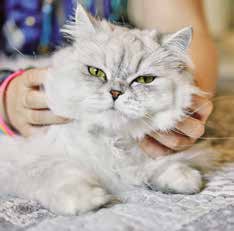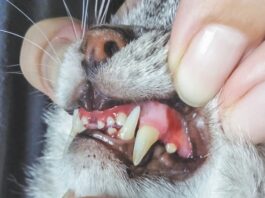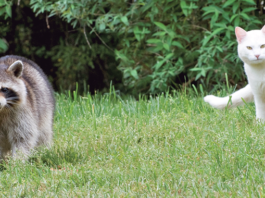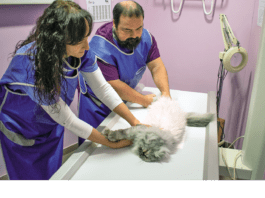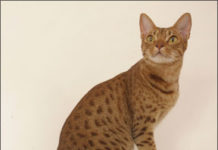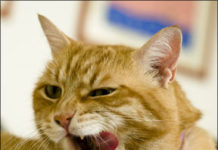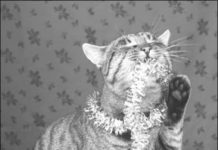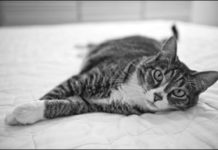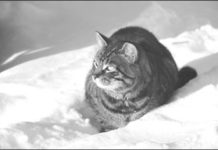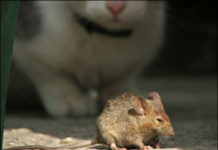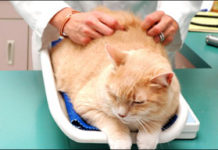Ask Elizabeth: December 2010
When Dr. Lucas came into the room I was too embarrassed to admit that Id been peeking at Lilys record so instead of asking her, Im asking you, Elizabeth: What does that description mean? In particular Im curious about the mackerel tabby part; Ive always called Lily a tiger cat, which I think is another name for tabby … but mackerel sounds fishy!
Short Takes: December 2010
Researchers developed a questionnaire for evaluation of cat owners perception of and knowledge about vaccination of cats, with owners asked to fill out a separate questionnaire for each cat they owned. A total of 3,163 questionnaires were evaluated ("Use of a web-based questionnaire to explore cat owners attitudes towards vaccination in cats," Veterinary Record, 2010). Vaccination as a kitten was the strongest predictor of up-to-date vaccination status, followed closely by plans to take the cat to a boarding cattery or cat show in the coming year. Owners who ranked the severity of infectious diseases or veterinary advice as very important were more likely to vaccinate their cats than owners who perceived these factors as less important.
Searching for Signs of Pain in Your Cat
Is there a clear way that we can tell that a cat is in pain? According to Andrea Looney, DVM, a senior lecturer in anesthesiology at the Cornell University Hospital for Animals, "We look at two categories of clinical signs - physiologic and behavioral. The physiologic signs include such indicators as heart rate, temperature, respiratory rate, blood pressure and the levels of certain stress hormones in the blood. "But these indicators are not as reliable as the behavioral signs," she continues. "Each cat is an individual, and we try to look at how they normally behave and how that behavior is different when they come in with complaints.
Can Acupuncture Help Your Pet?
Three or four decades ago, few cat owners or veterinary practitioners in the U.S. knew anything whatsoever about acupuncture, the centuries-old Chinese system of health care that aims to treat physical disorders and their accompanying pain by inserting needles into specific points on a patients body. Today, thousands of veterinarians throughout the nation routinely practice acupuncture in their clinics, and countless cats are benefiting from it. "Im certainly an acupuncture advocate," says Andrea Looney, DVM, a senior lecturer in anesthesiology at the Cornell University Hospital for Animals. "I use it in treating between 10 percent and 20 percent of the patients that I see - not only cats, but dogs, horses and other animals as well." Dr. Looney stresses that she relies on acupuncture as a complementary technique, always using it in conjunction with the standard practices of Western veterinary medicine.
Short Takes: November 2010
There is a growing understanding of osteoarthritis (OA) - also called degenerative joint disease - in cats that has led to investigation of the clinical signs, radiographic findings and also treatments. Cats are very good at compensating for orthopedic diseases, and therefore the clinical signs of arthritis are more difficult to detect and are different than those seen in dogs.
Toxoplasmosis: The Facts
Toxoplasmosis is a fairly common zoonosis (a disease that can be shared between humans and animals); 30 to 40 percent of adult humans, and roughly the same percentage of cats, have antibodies that indicate prior exposure to the organism that causes the disease. Nevertheless, theres still a lot of misinformation regarding toxoplasmosis. The disease poses a threat primarily to fetuses and to immunosuppressed patients, but an understanding of the organisms life cycle, how transmission occurs and can be avoided, and the signs of infection can greatly reduce the risk of serious disease.
Ask Elizabeth: November 2010
Dear Elizabeth, I cant believe Im writing this, but we have bed bugs in our home. We recently vacationed in Europe, and evidently brought home some unwanted hitchhikers. I thought only low rent motels were a source of bed bugs, but we stayed at beautiful, exclusive hotels, and now I find myself wondering what went wrong.Weve hired a licensed exterminator and will move out of our home when the exterminator is using pesticides in the house, but Im concerned for our cats. Should we move them out too and, if so, is there any risk of the bed bugs hitching a ride on the cats?
Nasal Disease: Understand the Signs
Does your cat have a bad case of the sniffles? Its probably nothing to worry about. Just like you, your cat is apt to come down with a minor respiratory infection now and then, and it will pass. But if the runny nose that persists for more than a few days - and especially if the secretions thicken and become darker in color - you should take your pet to the veterinarian for an examination.
Hypothermia: A Winter Danger
Cats whose breed developed in frigid areas of the world are likely to tolerate cold weather better than cats whose origins can be traced to more temperate regions. But even the fattest, furriest Maine Coon will have only a slight edge over a trim, thin-coated Siamese when it comes to prolonged exposure to the biting winds, ice, snow and sleet that come with winter. Indeed, any cat that is left outside for extended periods of time when the temperature is below freezing - not to mention any poor creature that happens to tumble into an ice-cold pond - will be at risk for a potentially deadly drop in body temperature.
Lungworm: Tricky To Diagnose
Yearly, thousands of cats are brought to veterinary clinics throughout the U.S. showing the telltale signs of respiratory distress: labored breathing, chest constriction, wheezing and coughing. In the vast majority of cases, the animal will be diagnosed with asthma, a mechanical constriction of the airways, or bronchi, the narrow network of tubes that lead directly from the trachea to the lungs. The narrowing of the airways occurs when a cats immune system overreacts to the presence of an allergy-producing substance, such as cigarette smoke, dusty kitty litter or pollen and responds to the presence of the allergen by releasing stimulants that cause a swelling of the tissue (mucous membrane) lining the bronchi.
The Veterinary Exam: Schedule It!
Luckily, your six-year-old cat, Dottie, has never been sick. Nevertheless, youve made a point of taking her to her veterinarian for a routine physical exam twice a year. Youre doing the right thing, says William Miller, VMD, medical director at Cornell Universitys Companion Animal Hospital, and all cat owners would do well to follow suit. "Its a very good idea to have every cat undergo a twice-yearly exam," he says. "This is especially true for geriatric cats - those that are age 10 and older - and for animals that spend time outdoors and are exposed to a host of feline diseases." A thorough checkup should also be obligatory for any new cat that is brought into a household and for kittens when they reach one year of age.
Osteosarcoma: A Serious Diagnosis
Thanks to the numerous advances in veterinary medicine, many of the cancers to which cats are susceptible are now controllable, sometimes curable - and even preventable (in the case of mammary cancer, for example). This does not always hold true, however, for osteosarcoma, a highly destructive feline bone cancer for which there is no known cure unless it is detected early. Once osteosarcoma has invaded a cats body, the best that the animals owner can hope for is early diagnosis and management of the disease. If the cancer is confined to a limited area of an affected cats body, successful treatment will almost always involve surgical excision - the amputation of a leg, for example, or the removal of a part of the animals jawbone - in which case the cat may go on living for years.

